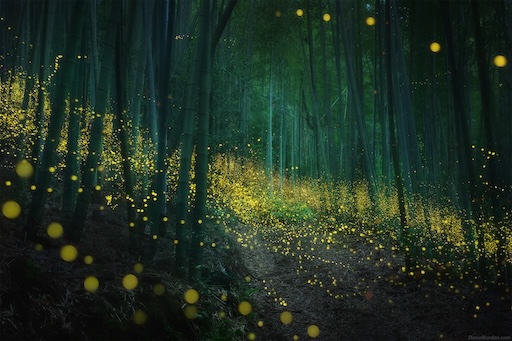
Imagine standing by a quiet riverbank in rural Japan, the air heavy with the scent of summer grass. The last traces of daylight have slipped away, and for a moment, darkness surrounds you. Then—like magic—tiny green lights begin to flicker in the air. One, two, dozens... dancing in silence.
This is the Hotaru Season, Japan’s firefly phenomenon. A fleeting window in early summer when nature puts on a light show older than any festival, and far more enchanting.
More Than Just Bugs: The Spirit of Hotaru
In Japanese culture, fireflies—hotaru—aren’t just insects. They’re symbols of fleeting beauty, unspoken love, and the souls of the departed. Poets of the Heian period (794–1185) wrote verses about them. Samurai believed they carried ancestral spirits. Today, they are celebrated with festivals that mix nostalgia, reverence, and wonder.
Watching fireflies in Japan isn’t just about the view—it’s a full-body experience. The warm humidity, the buzz of frogs, the absolute hush that falls over crowds as the lights begin to rise—it’s as if everyone agrees to hold their breath at once.
Best Places to Witness the Magic
The Hotaru season usually occurs from late May to early July, depending on region and weather. Here are some of the most magical spots:
- Gifu (Okuno Hosomichi) – A quiet, off-grid mountain area where fireflies flicker above untouched streams. No festival, just silence and stars.
- Kyoto (Uji River & Arashiyama) – Fireflies weave between bamboo groves and over gently flowing rivers. Romantic and deeply poetic.
- Kumamoto (Yamaga City) – Famous for its synchronized fireflies and local matsuri. Some of the clearest, densest displays in Japan.
- Tokyo Outskirts (Fussa or Akigawa Valley) – Yes, even near the megacity, you can find pockets of firefly-lit trails just a train ride away.

The Science Behind the Glow
Fireflies glow due to a chemical reaction called bioluminescence—luciferin reacting with oxygen inside their bodies. But not all fireflies are the same. In Japan, the two most famous species are:
- Genji-botaru – Larger, slower-glowing fireflies often found near rivers and streams.
- Heike-botaru – Smaller, more flickery types that love rice fields and marshy spots.
Some firefly species even flash in patterns to attract mates. In places like Yamaga, hundreds pulse in synchronized waves—like watching nature breathe in light.
Hotaru Matsuri – Firefly Festivals
Many towns hold Hotaru Matsuri (Firefly Festivals), where locals set up lanterns, food stalls, and quiet zones for viewing. It’s not uncommon to see couples in yukata strolling hand-in-hand under the glow, or kids chasing lights with paper fans.
Unlike the loud fireworks of other summer festivals, Hotaru Matsuri is soft, introspective. Some even say it’s the most “Japanese” of celebrations—appreciating the short-lived, the delicate, the unseen.
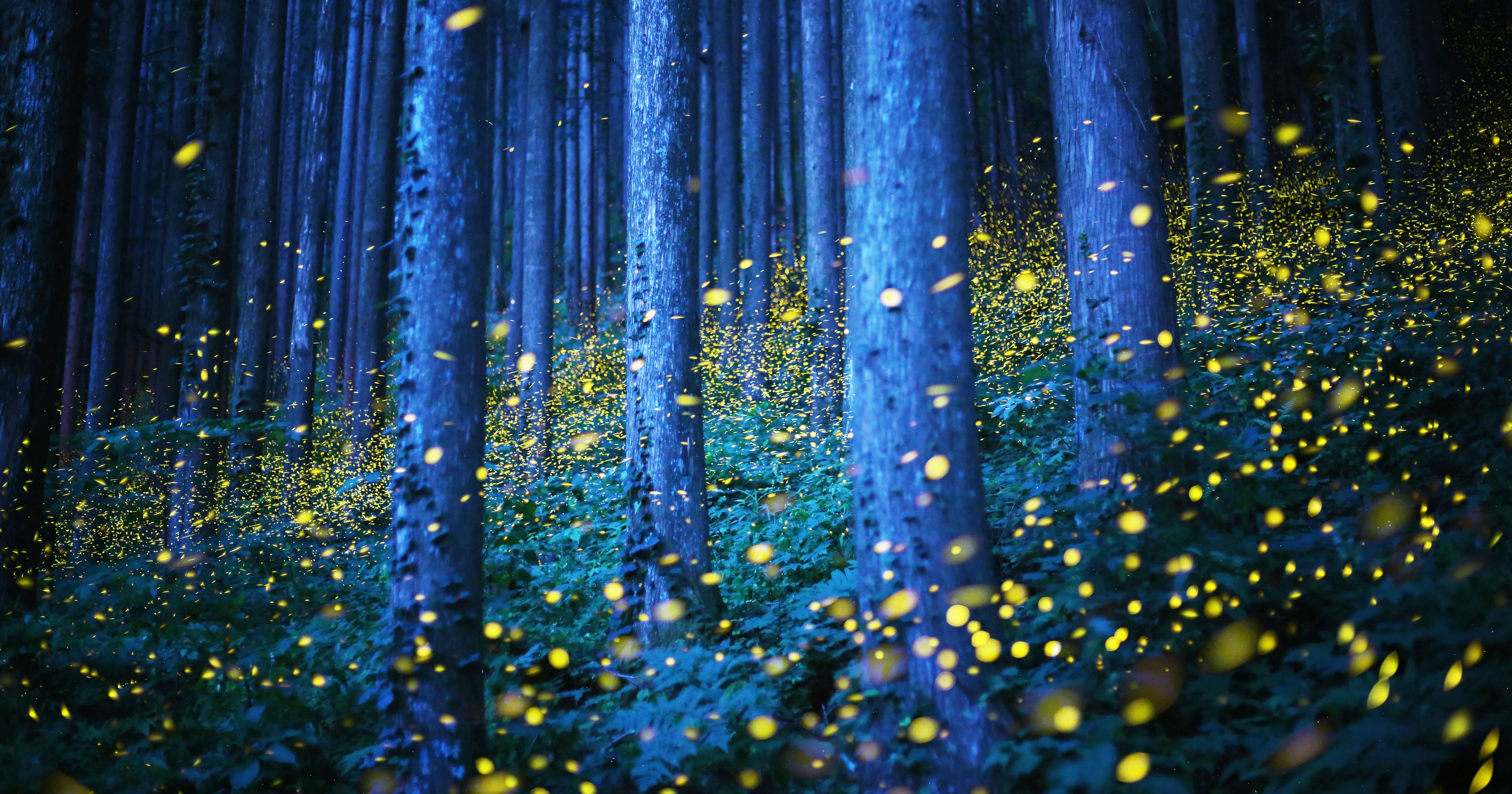
Rules of the Firefly Hunt
Watching fireflies in Japan comes with a silent code:
- 🔇 Stay quiet – noise disturbs their rhythm.
- 🔦 No flashlights – your phone light ruins the show.
- 👐 Don’t catch them – it’s seen as disrespectful to the spirit of the place.
Chasing the Hidden Light
In a world flooded with artificial light, the soft pulse of a firefly feels like a memory we didn’t know we missed. It reminds us that magic doesn’t need a screen, a soundtrack, or a filter. It just needs patience—and darkness.
If you ever find yourself in Japan in early summer, skip the crowded cities for a night. Find a quiet river. Stand still. And wait. The lights will come. And when they do, don’t speak—just feel.
Share this story and inspire others.
Tags: Hotaru, Fireflies in Japan, Japanese Summer, Firefly Viewing, Hotaru Matsuri, Hidden Japan, Magical Nature, Chasing Hidden Wonder
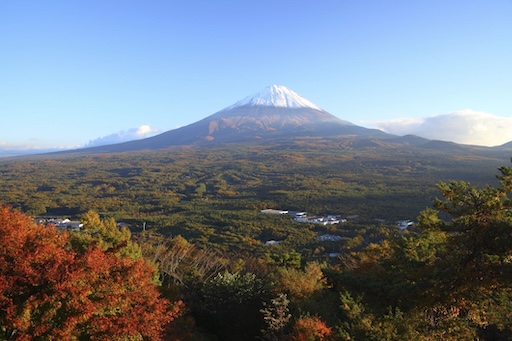 Aokigahara Forest – The Magnetic Silence of Mount Fuji’s Lava Woods
Aokigahara Forest – The Magnetic Silence of Mount Fuji’s Lava Woods
 The Sacred Corn Festivals – When Maize Becomes a God
The Sacred Corn Festivals – When Maize Becomes a God
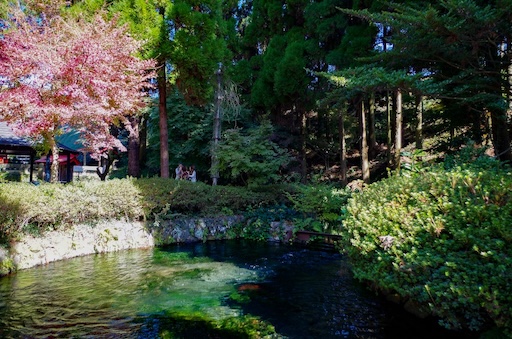 Shirakawa Suigen – Kumamoto
Shirakawa Suigen – Kumamoto
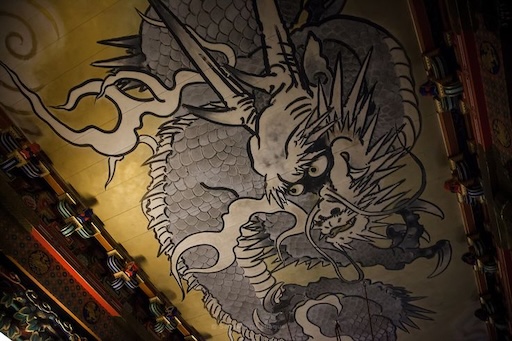 Nikko’s Crying Dragon – Tochigi
Nikko’s Crying Dragon – Tochigi
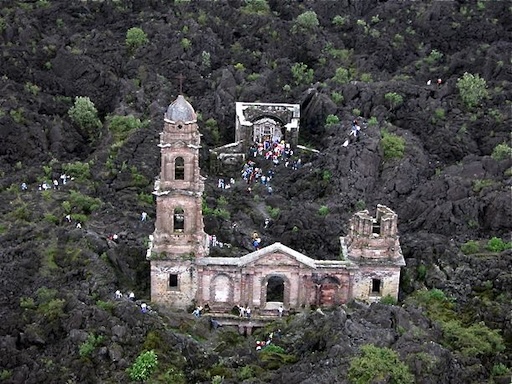 Paricutín Volcano – The Volcano That Was Born in a Cornfield
Paricutín Volcano – The Volcano That Was Born in a Cornfield
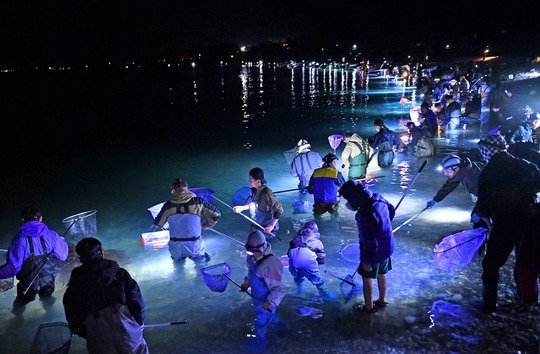 Bioluminescent Firefly Squid (Hotaru Ika) – Toyama Bay
Bioluminescent Firefly Squid (Hotaru Ika) – Toyama Bay